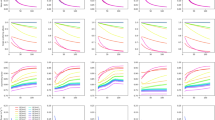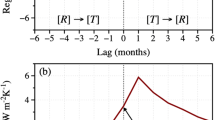Abstract
A parametric study of the instantaneous radiative impact of contrails is presented using three different radiative transfer models for a series of model atmospheres and cloud parameters. Contrails are treated as geometrically and optically thin plane parallel homogeneous cirrus layers in a static atmosphere. The ice water content is varied as a function of ambient temperature. The model atmospheres include tropical, mid-latitude, and subarctic summer and winter atmospheres. Optically thin contrails cause a positive net forcing at top of the atmosphere. At the surface the radiative forcing is negative during daytime. The forcing increases with the optical depth and the amount of contrail cover. At the top of the atmosphere, a mean contrail cover of 0.1% with average optical depth of 0.2 to 0.5 causes about 0.01 to 0.03 Wm−2 daily mean instantaneous radiative forcing. Contrails cool the surface during the day and heat the surface during the night, and hence reduce the daily temperature amplitude. The net effect depends strongly on the daily variation of contrail cloud cover. The indirect radiative forcing due to particle changes in natural cirrus clouds may be of the same magnitude as the direct one due to additional cover.
Similar content being viewed by others
Author information
Authors and Affiliations
Corresponding author
About this article
Cite this article
Meerkötter, R., Schumann, U., Doelling, D.R. et al. Radiative forcing by contrails. Annales Geophysicae 17, 1080–1094 (1999). https://doi.org/10.1007/s00585-999-1080-7
Received:
Revised:
Accepted:
Issue Date:
DOI: https://doi.org/10.1007/s00585-999-1080-7




